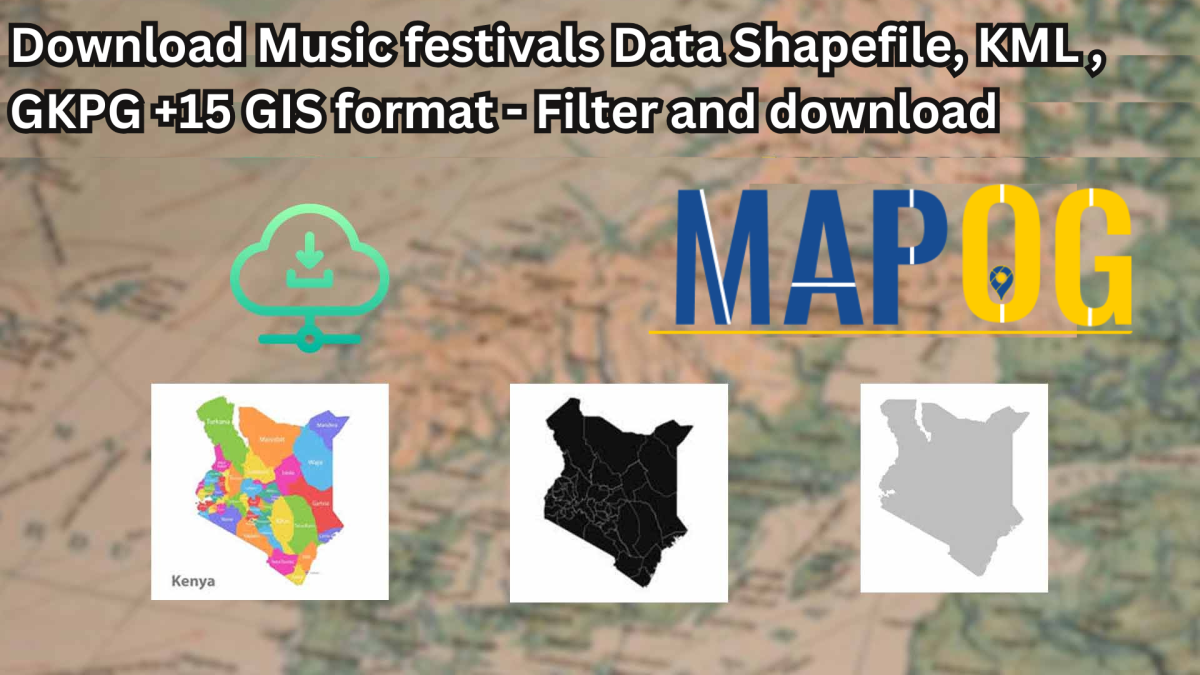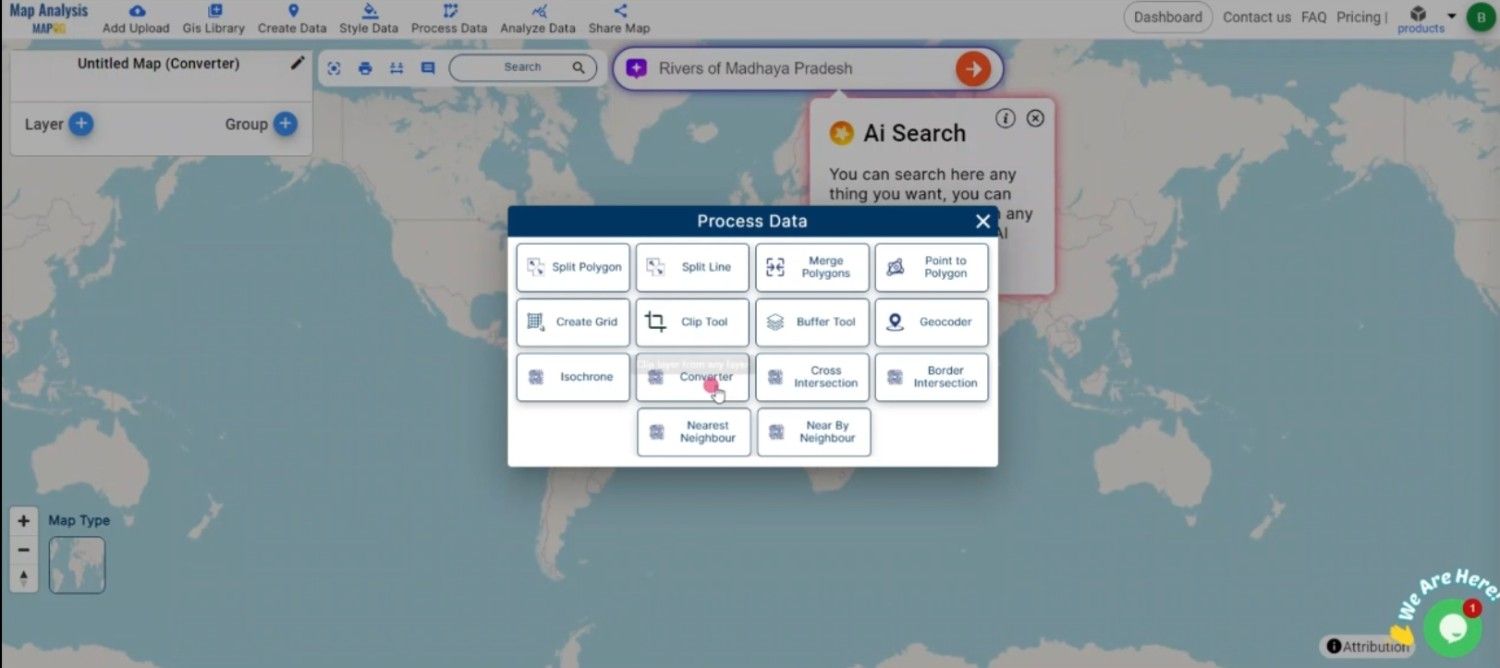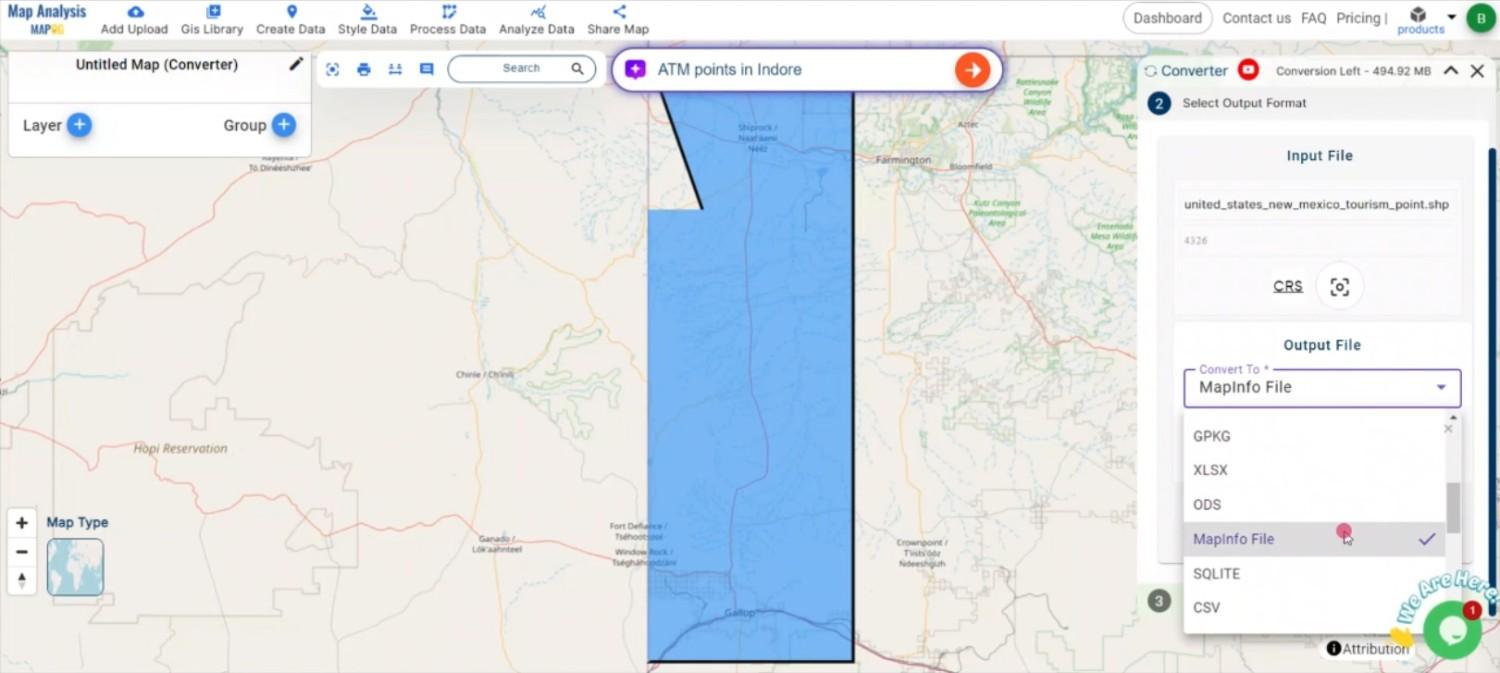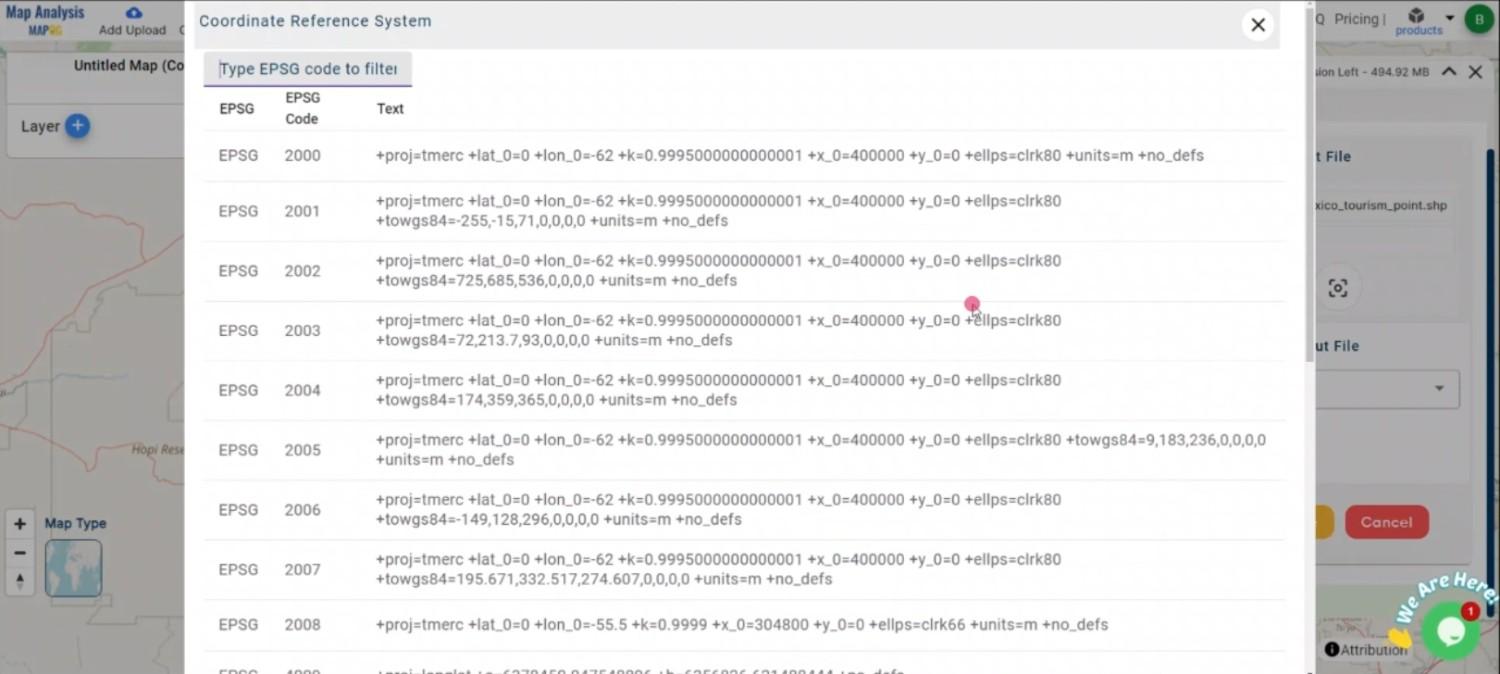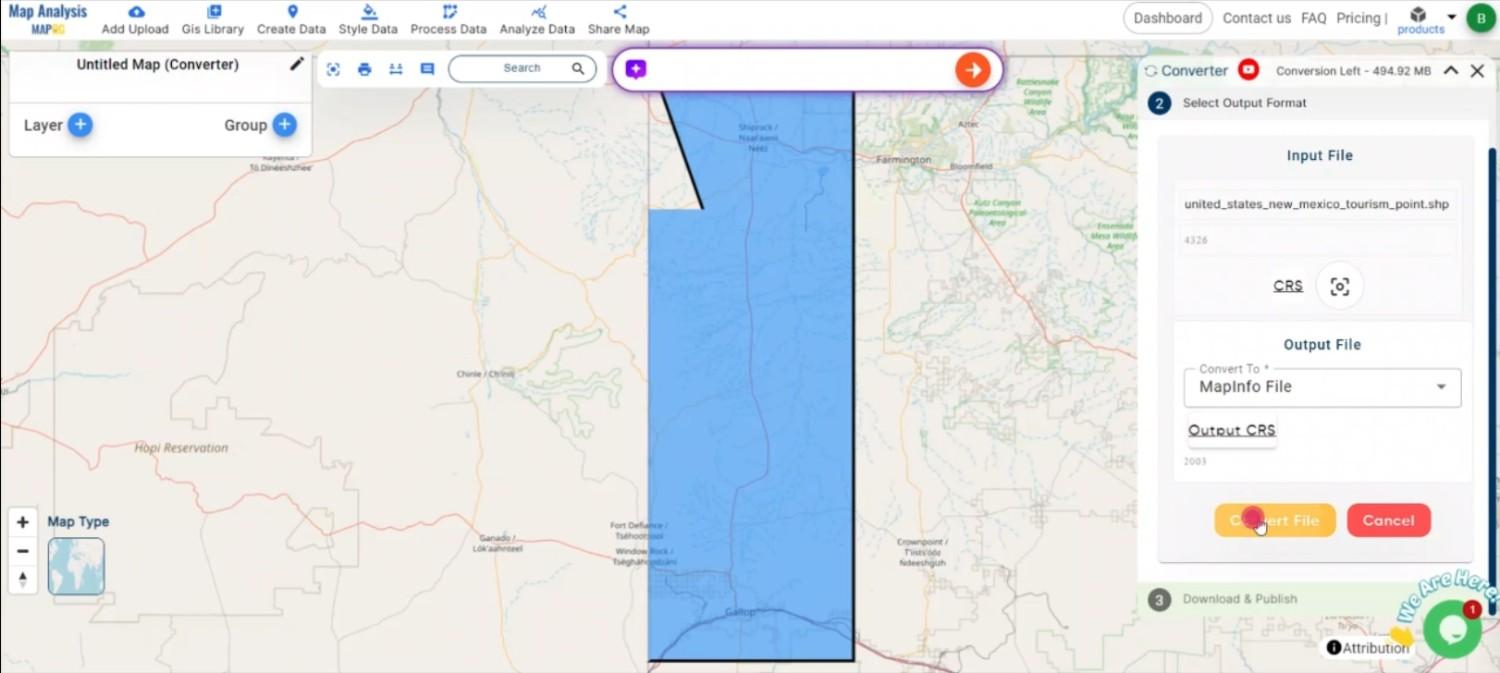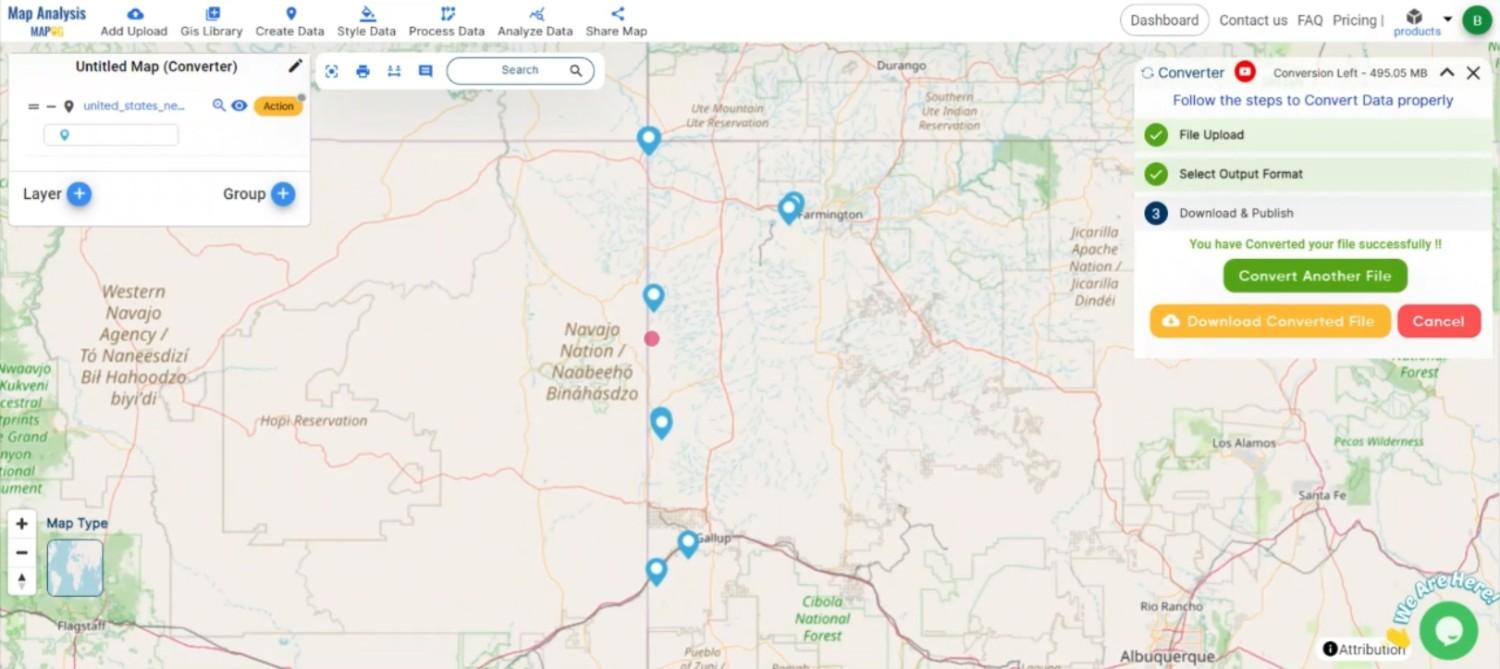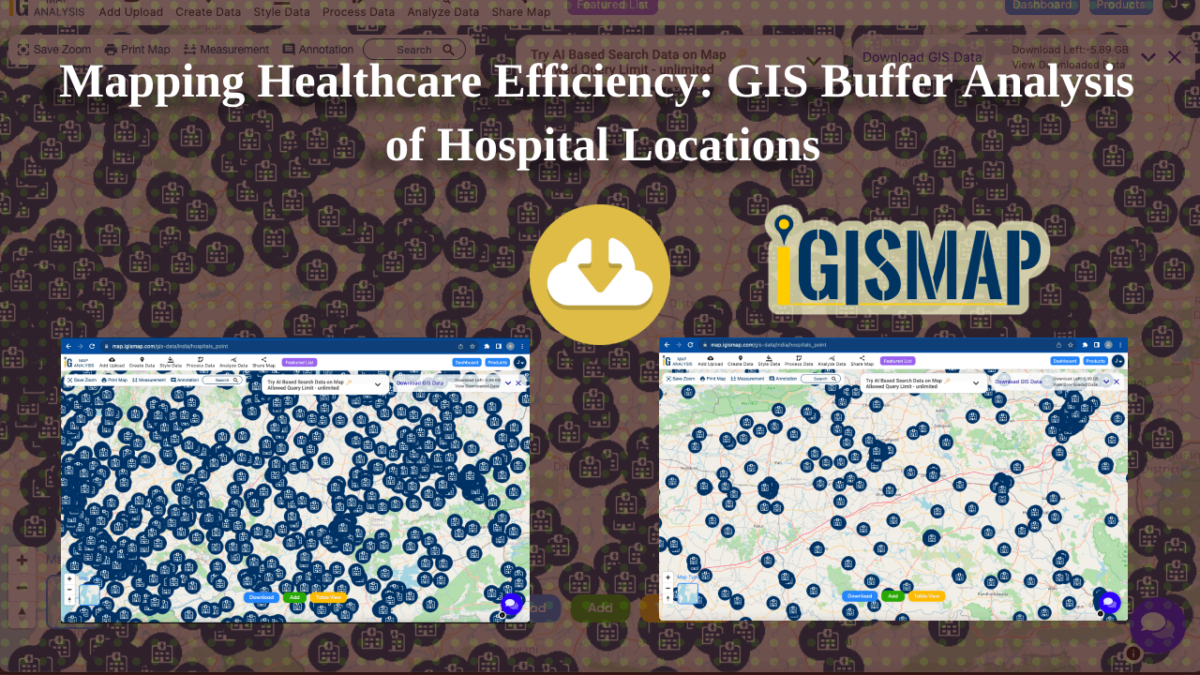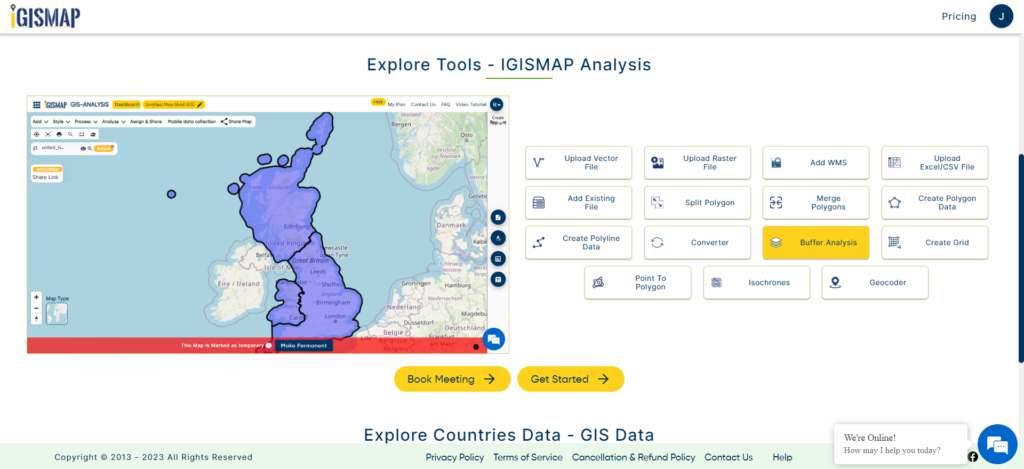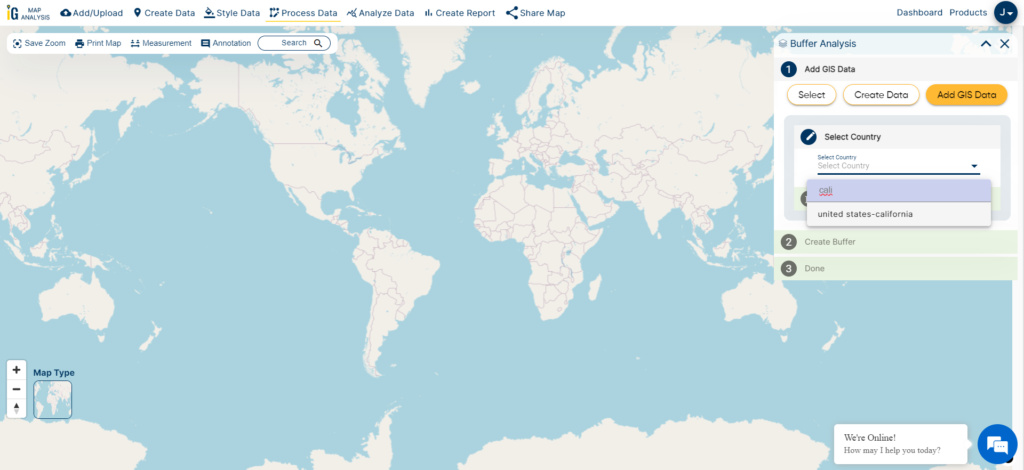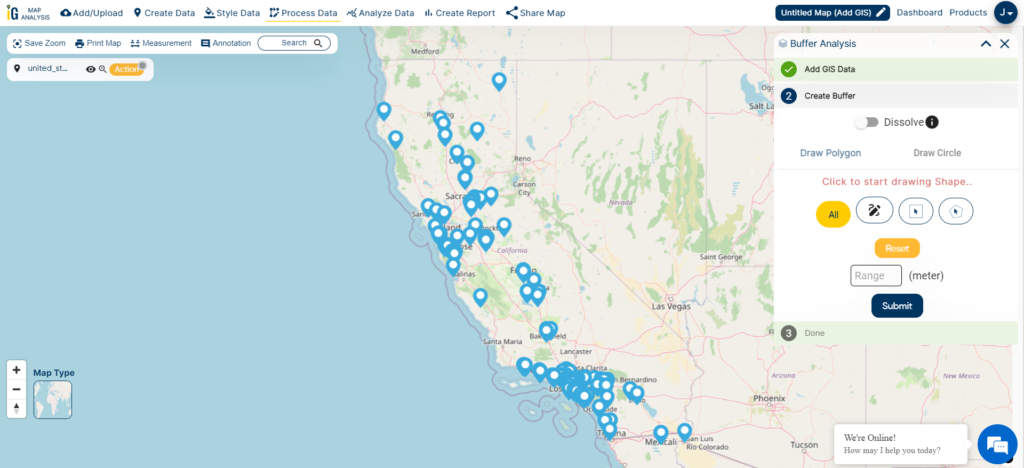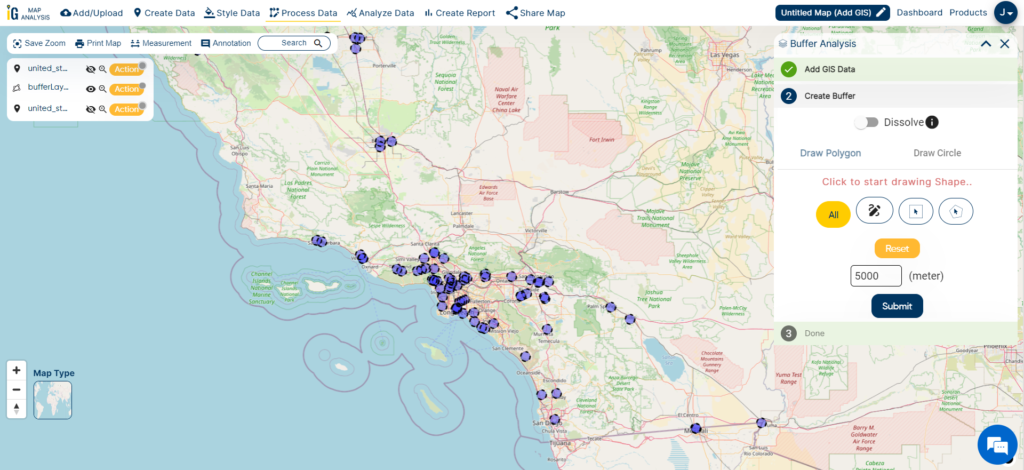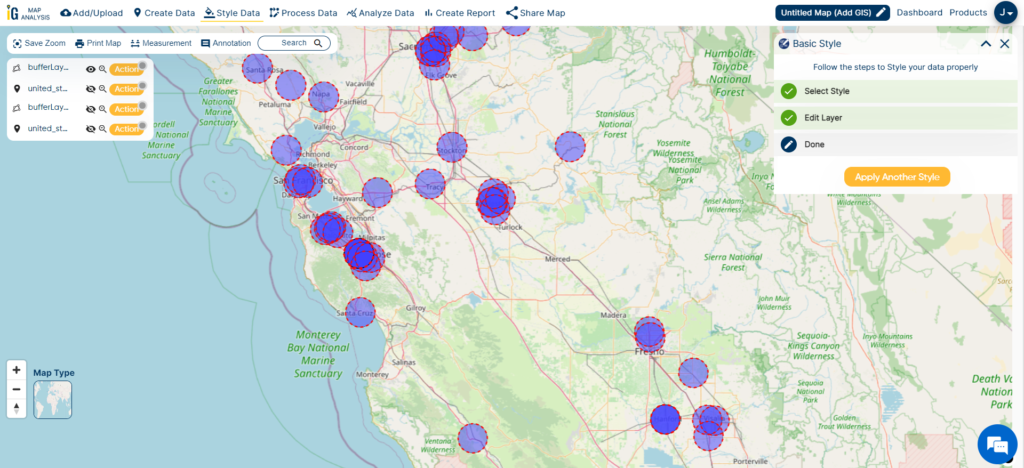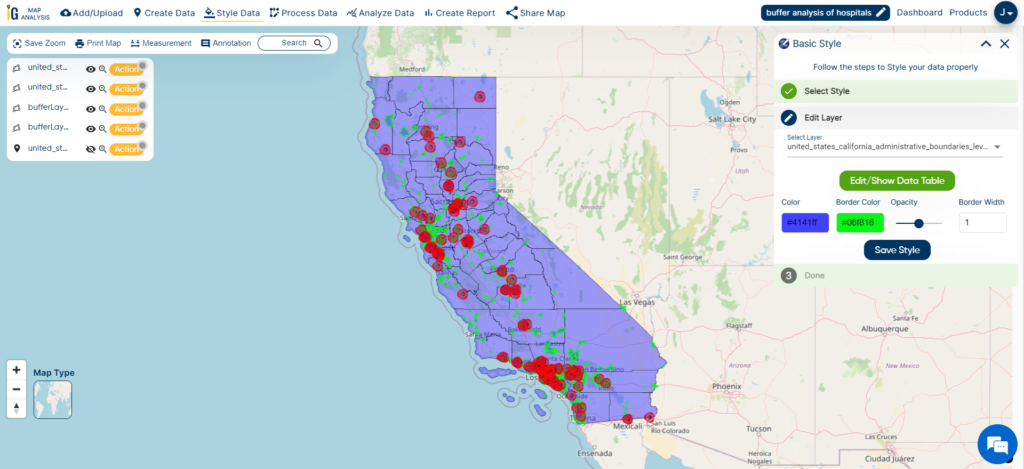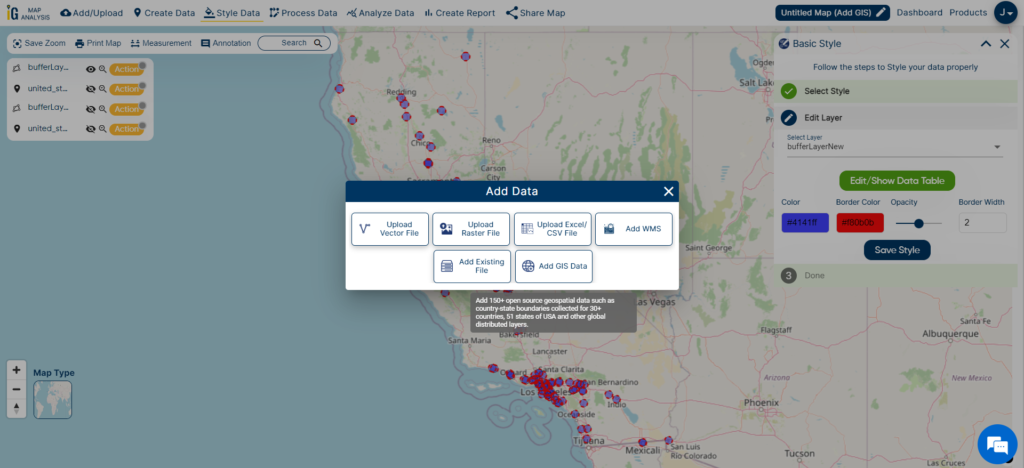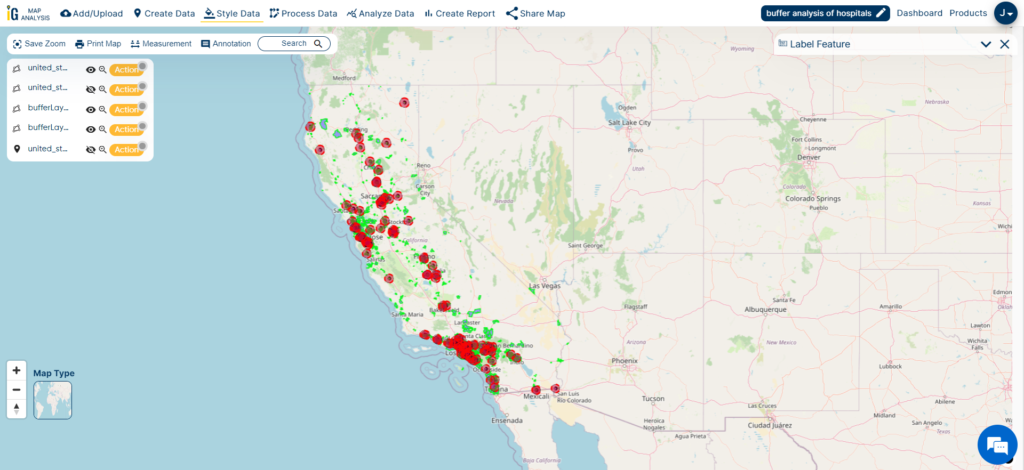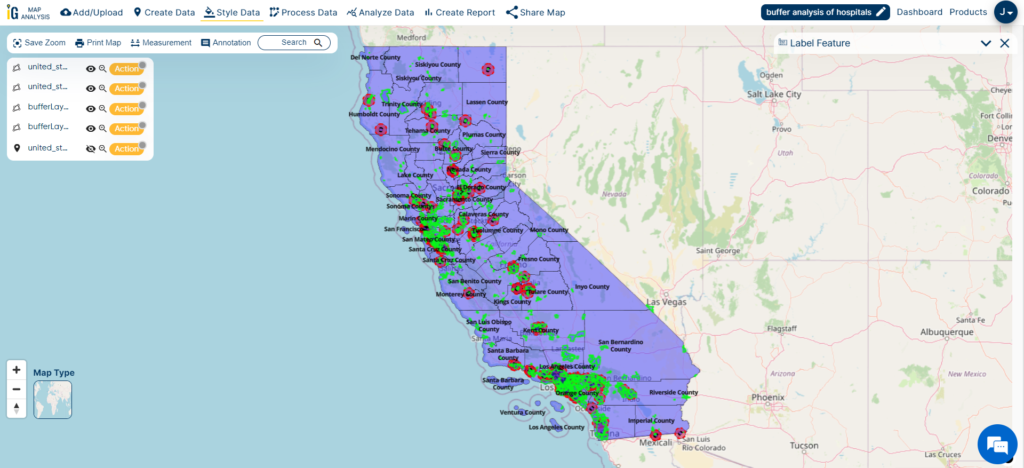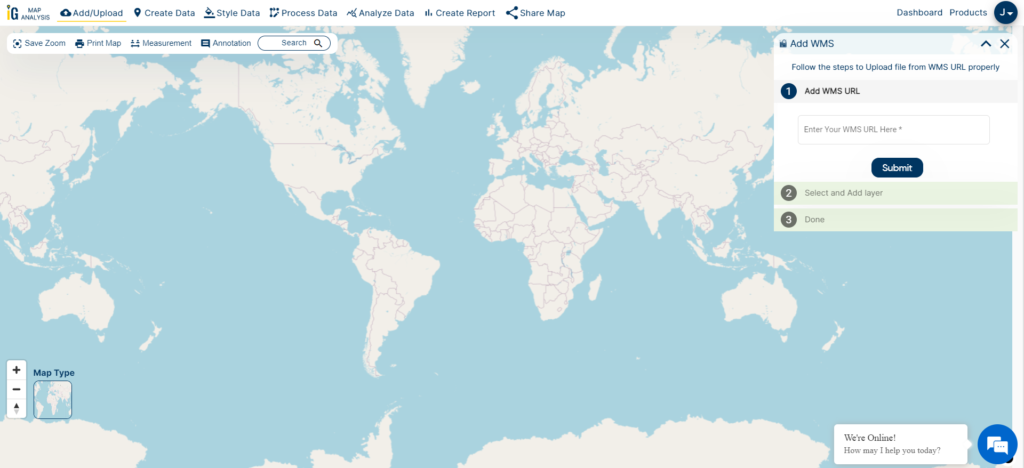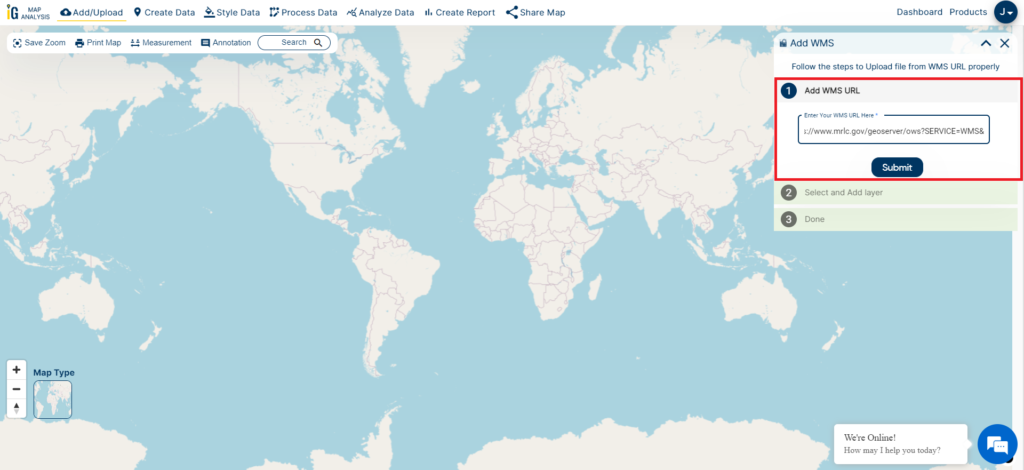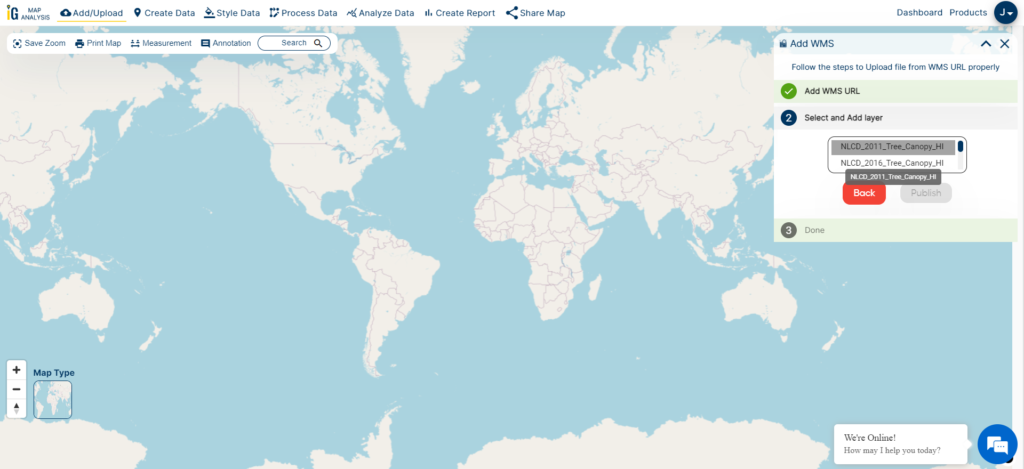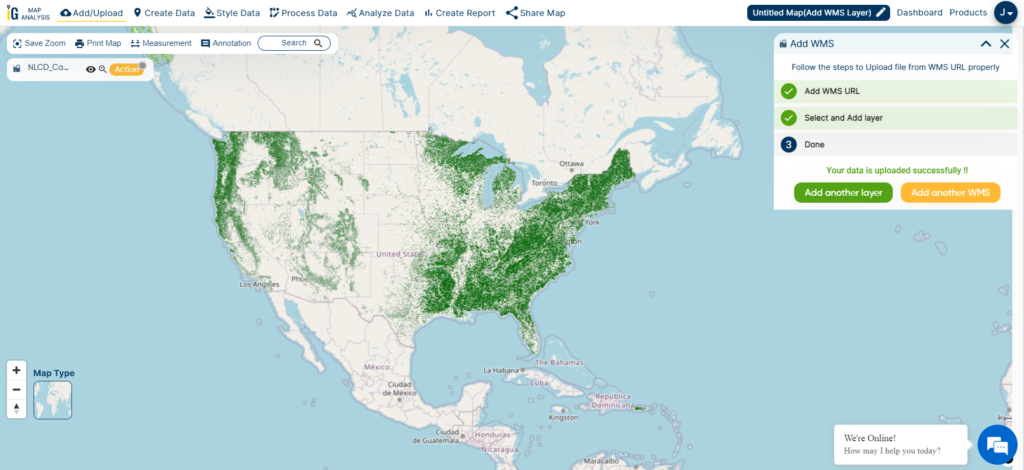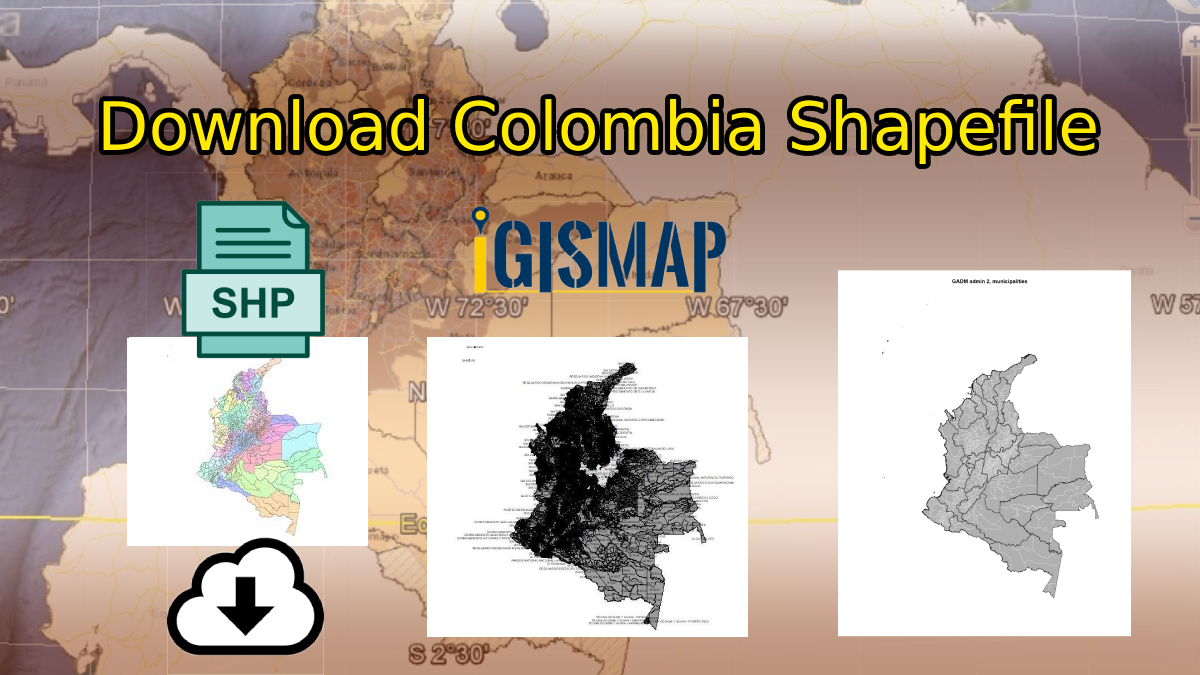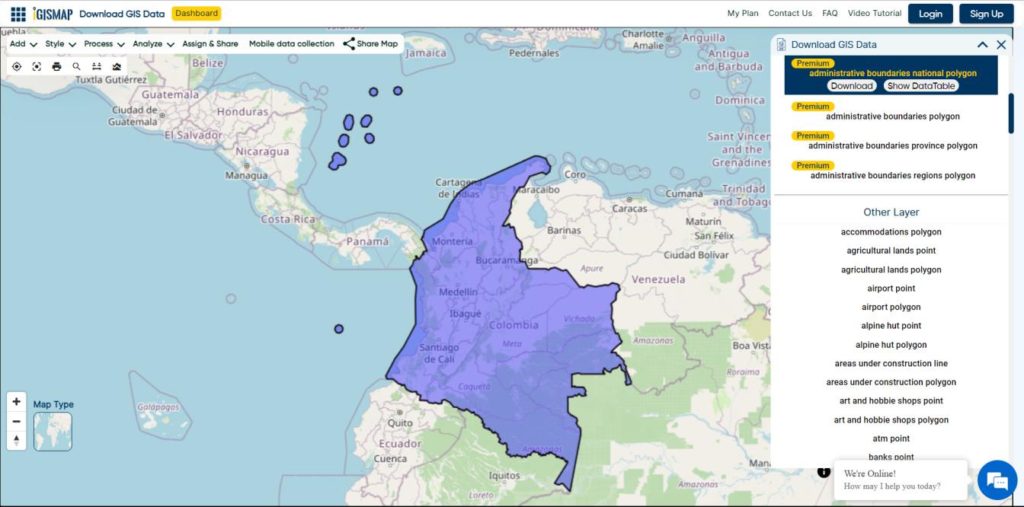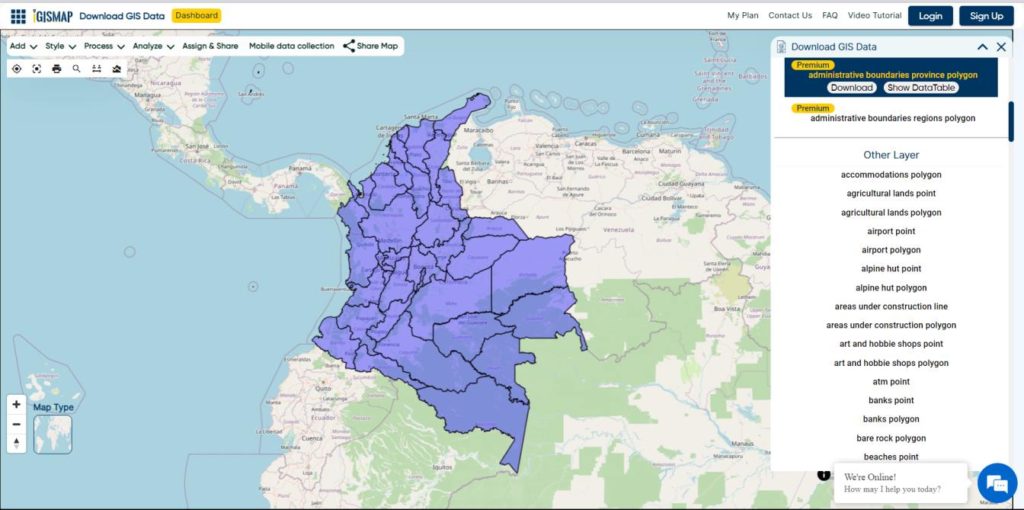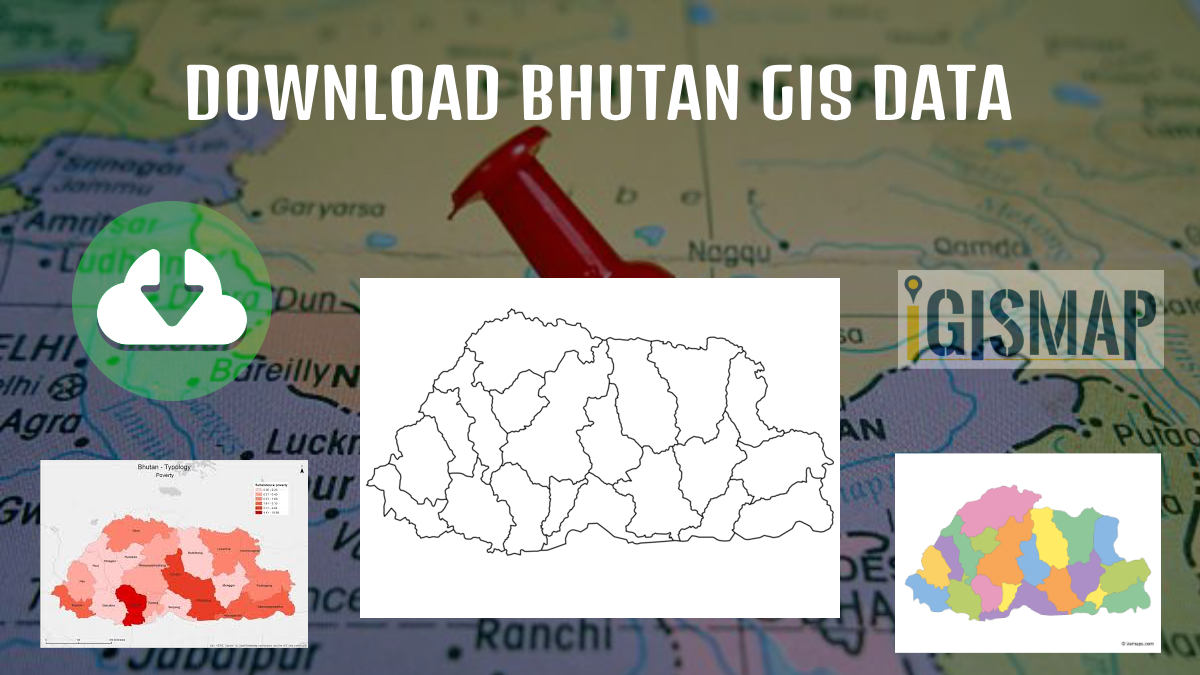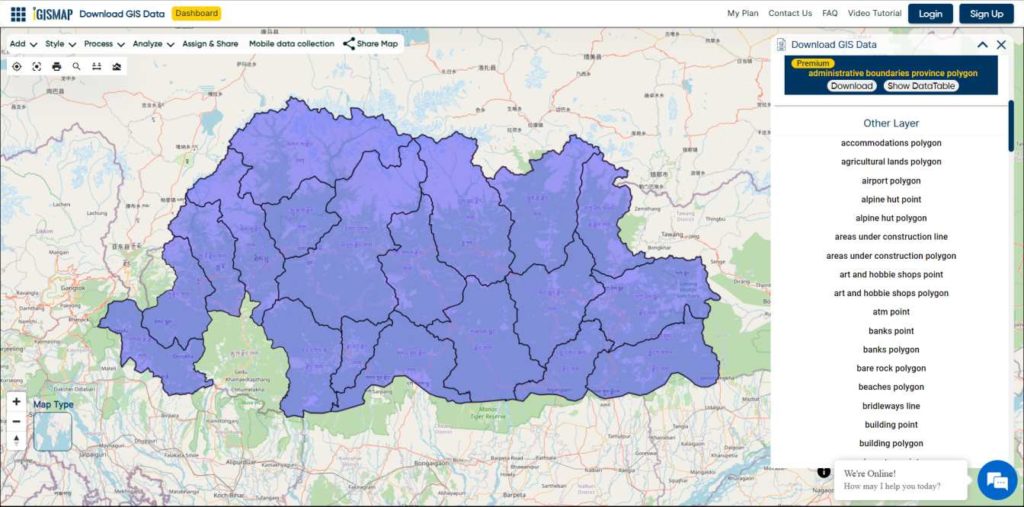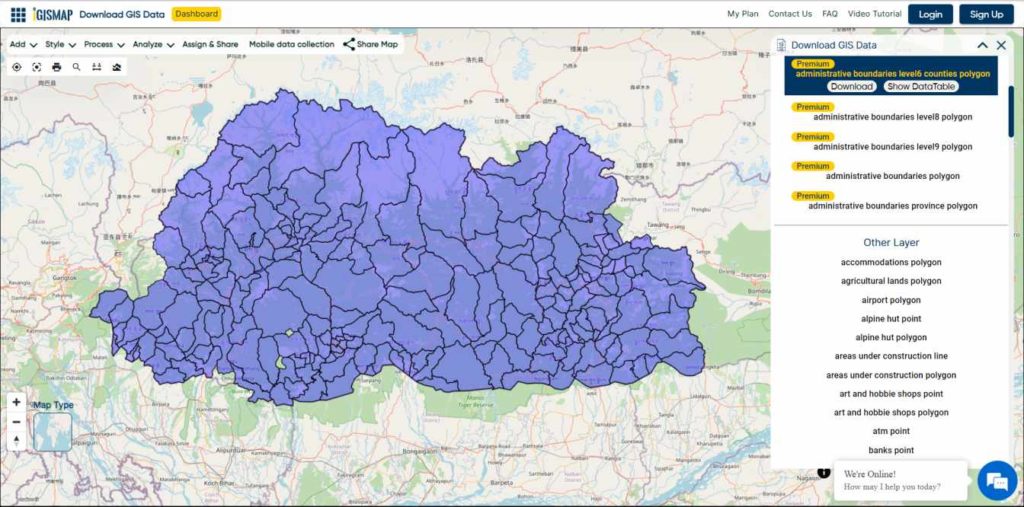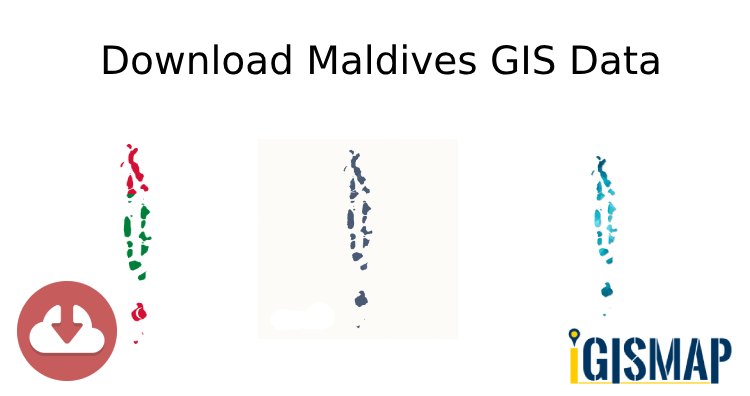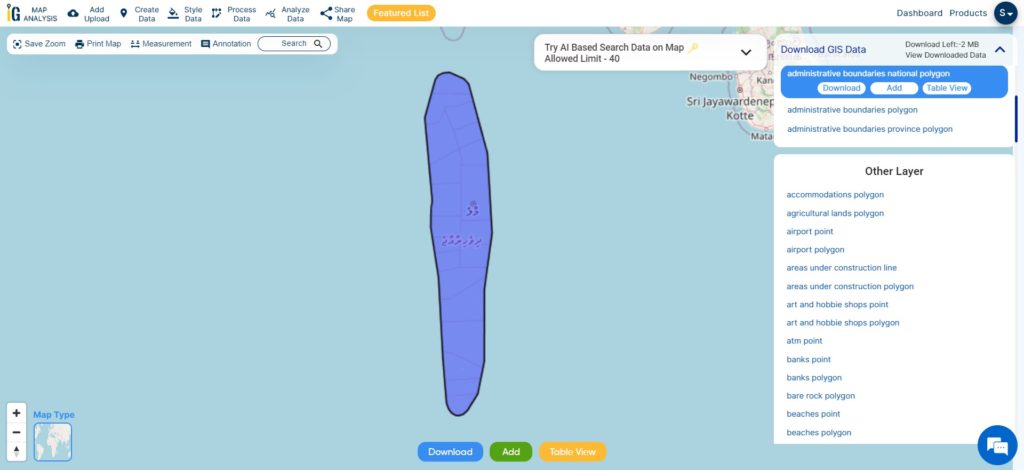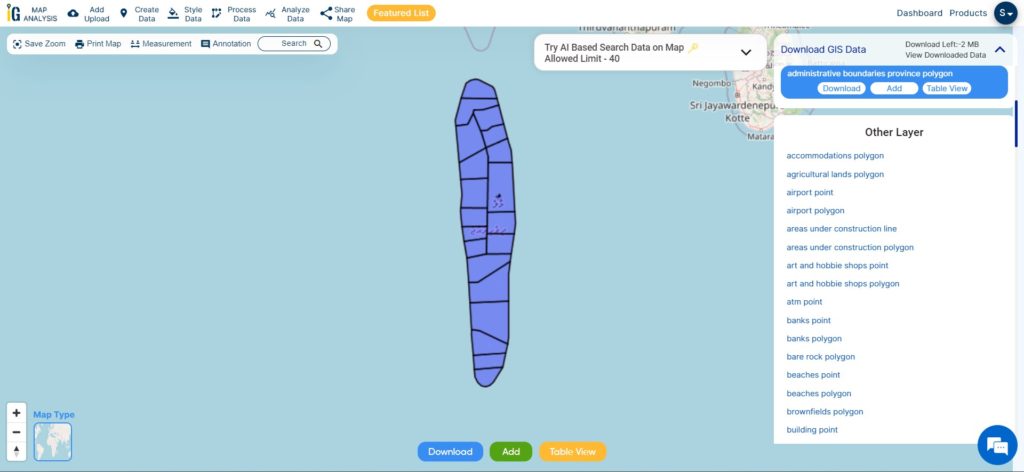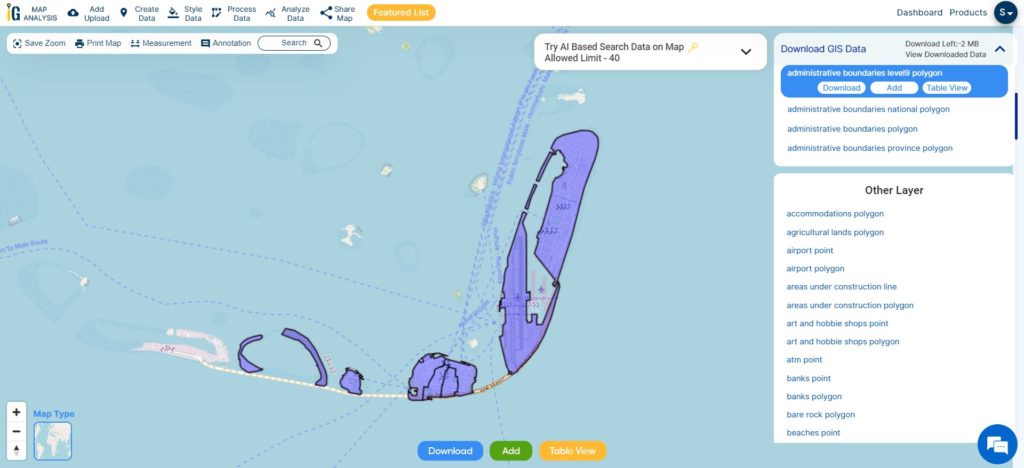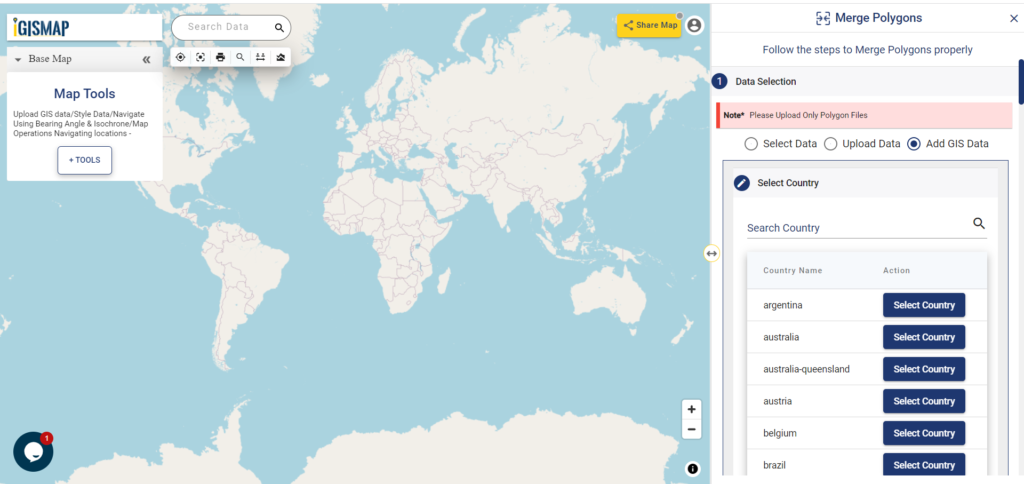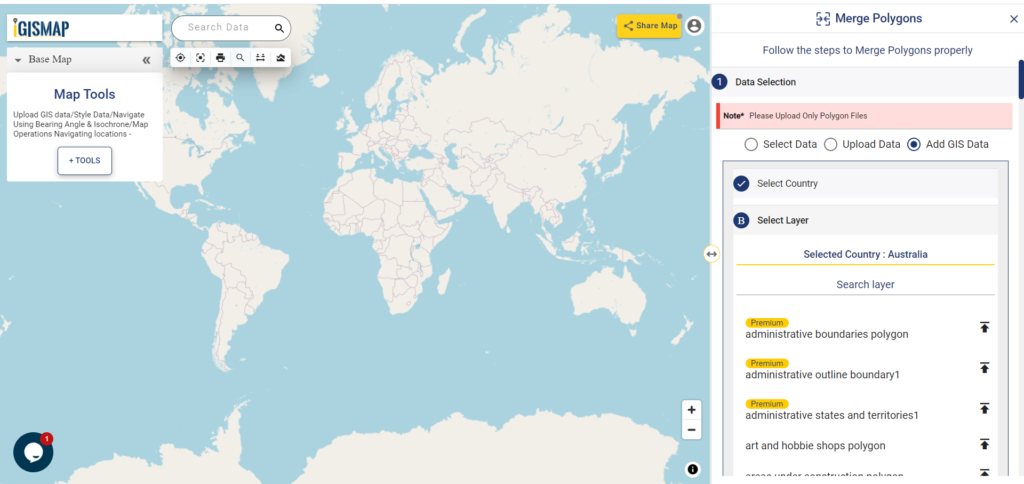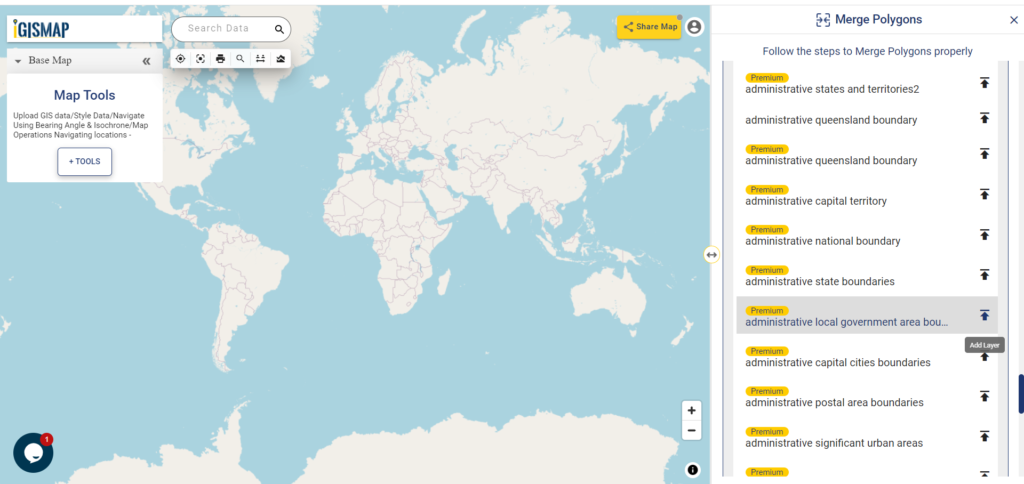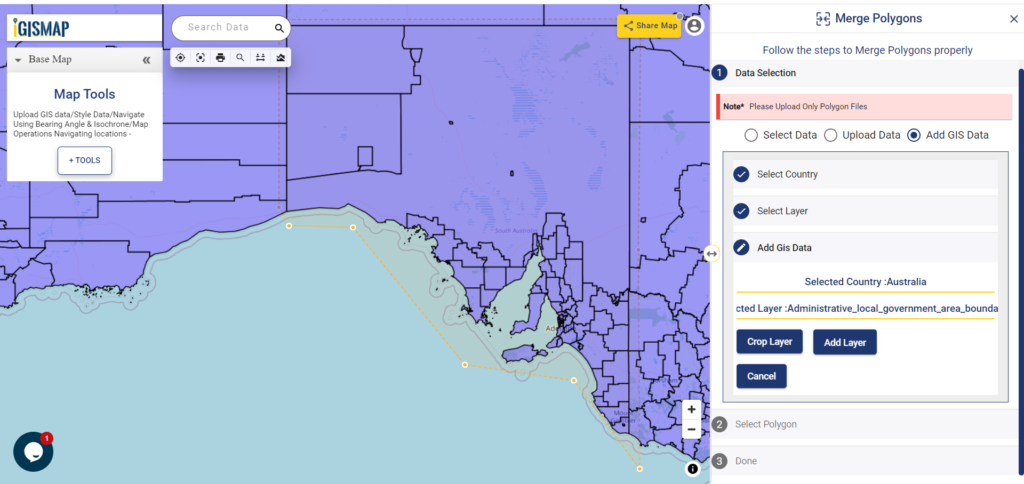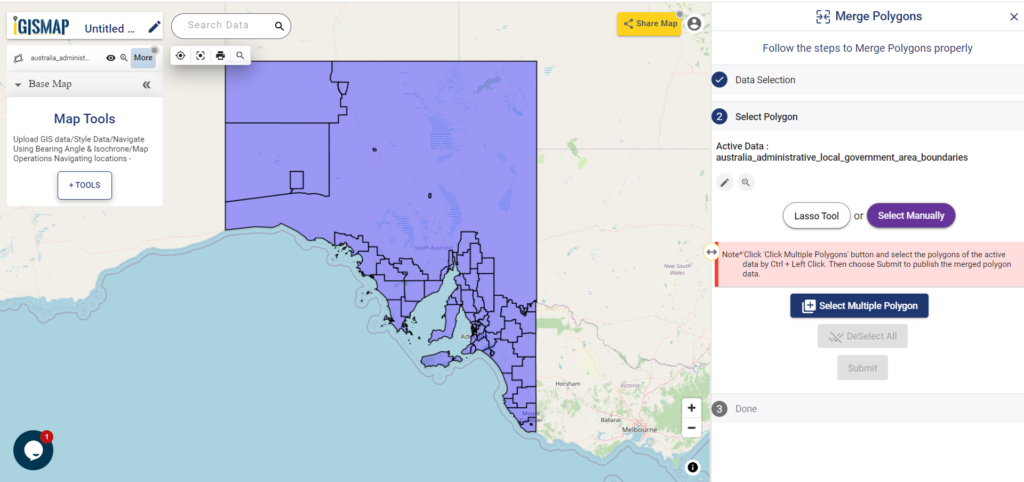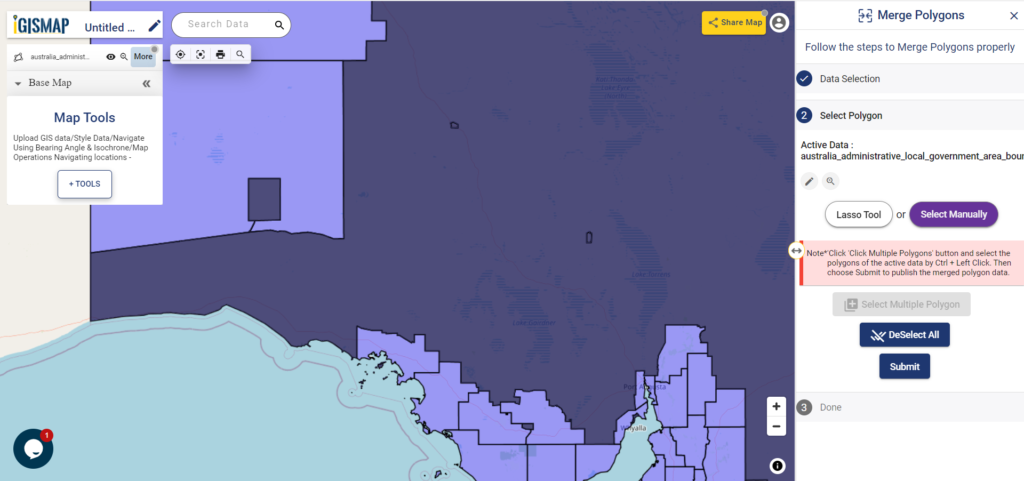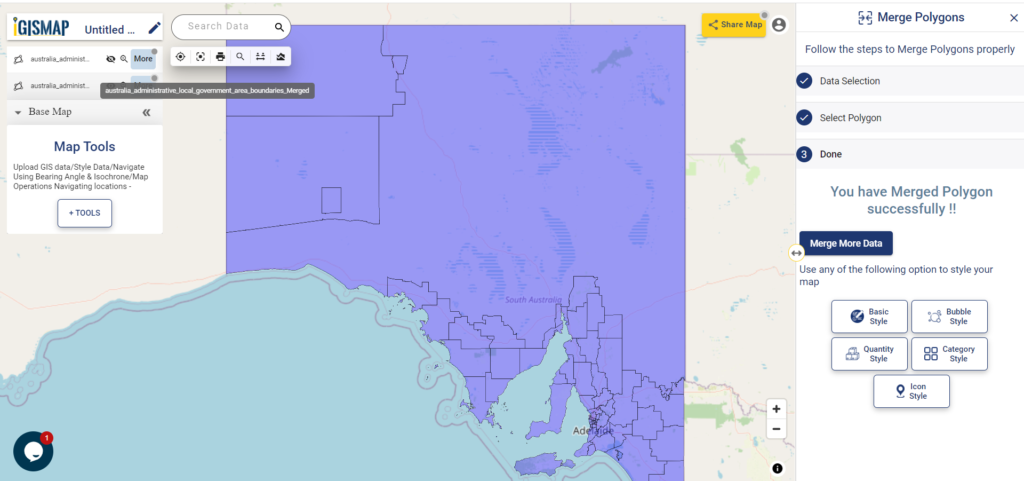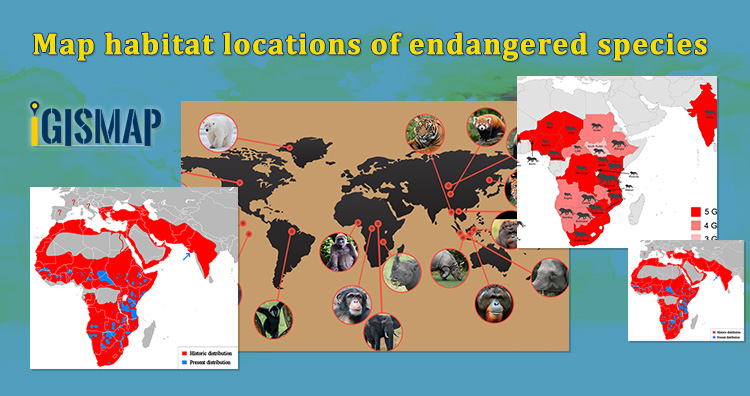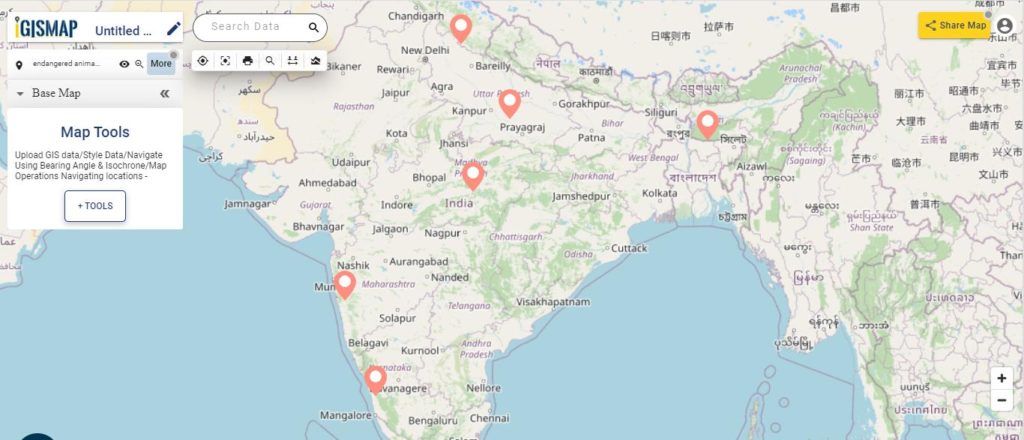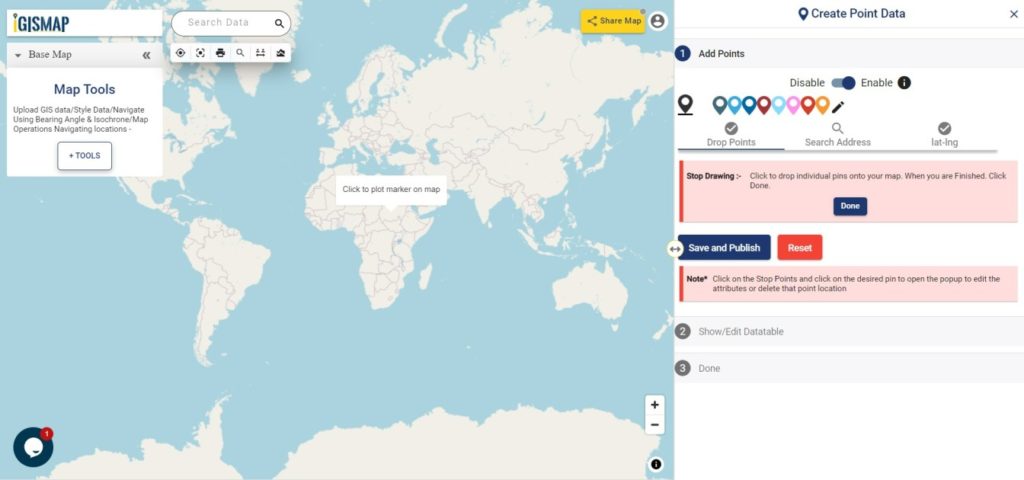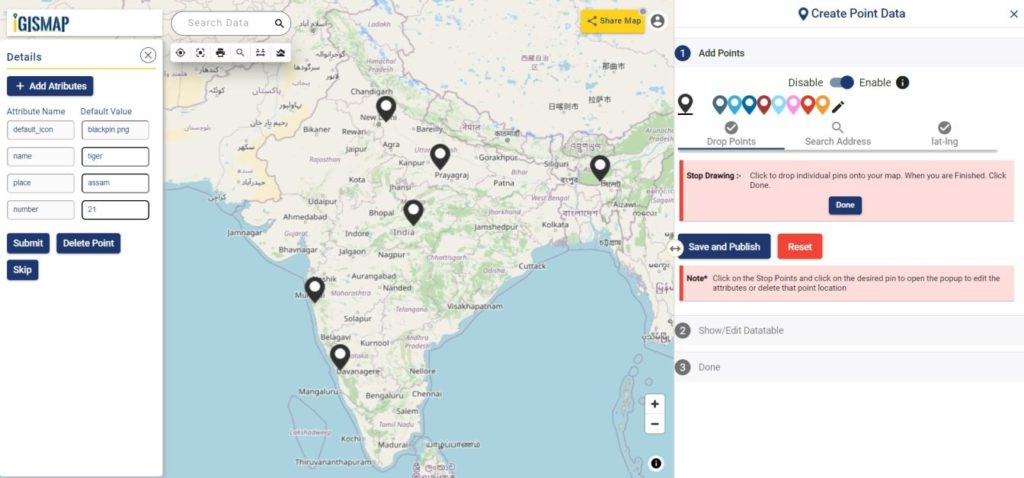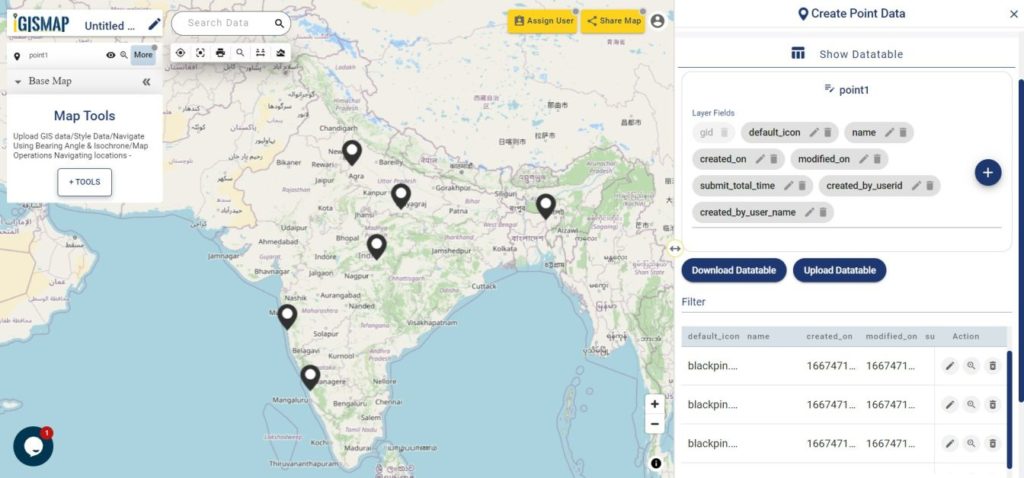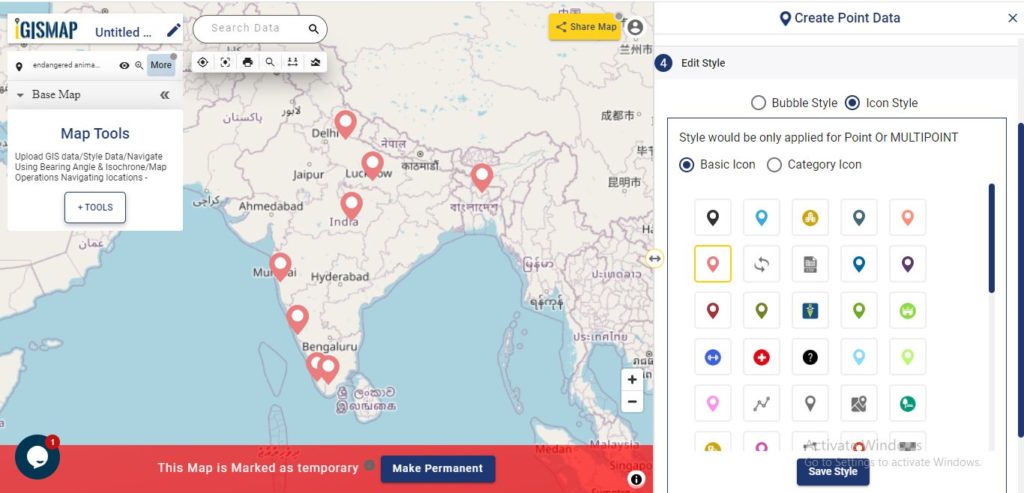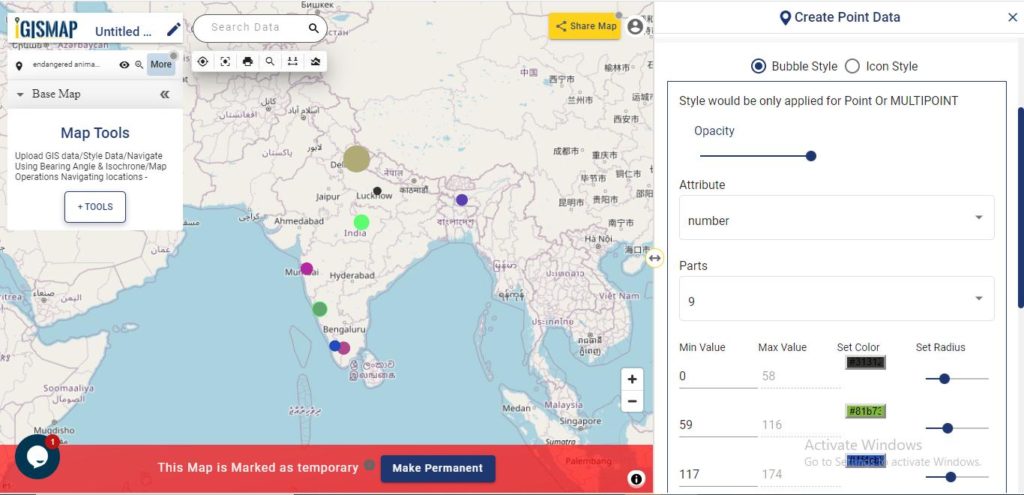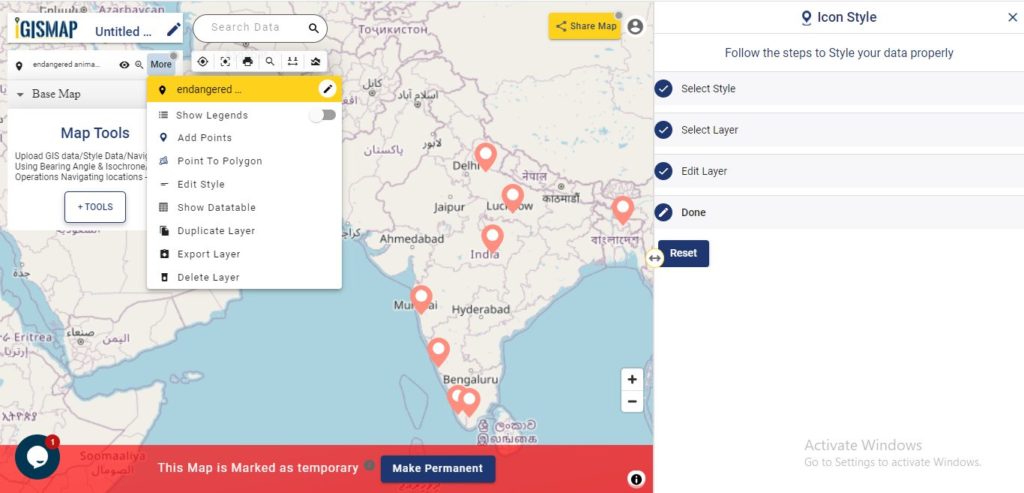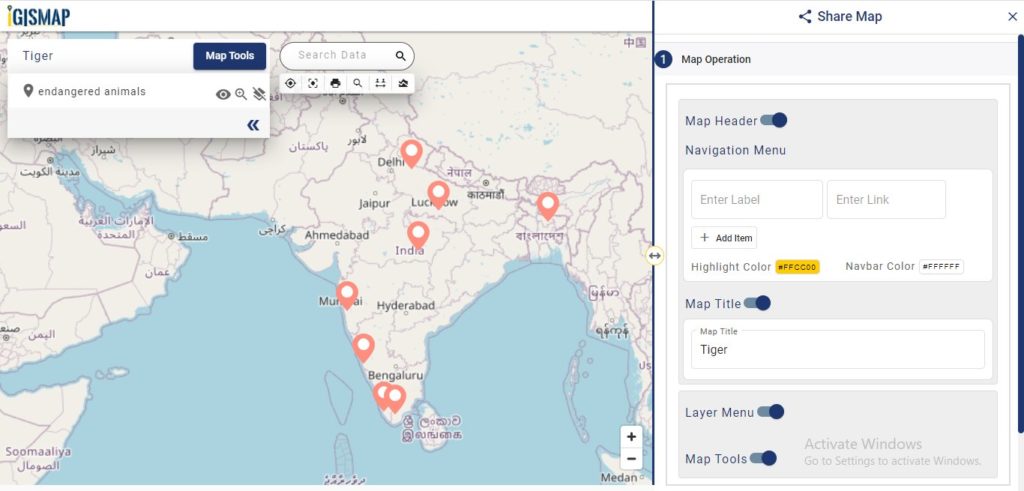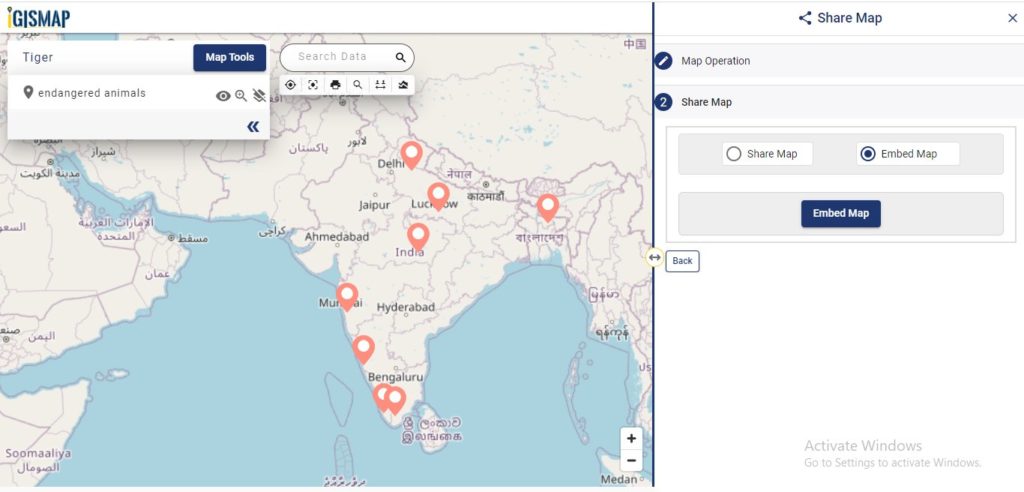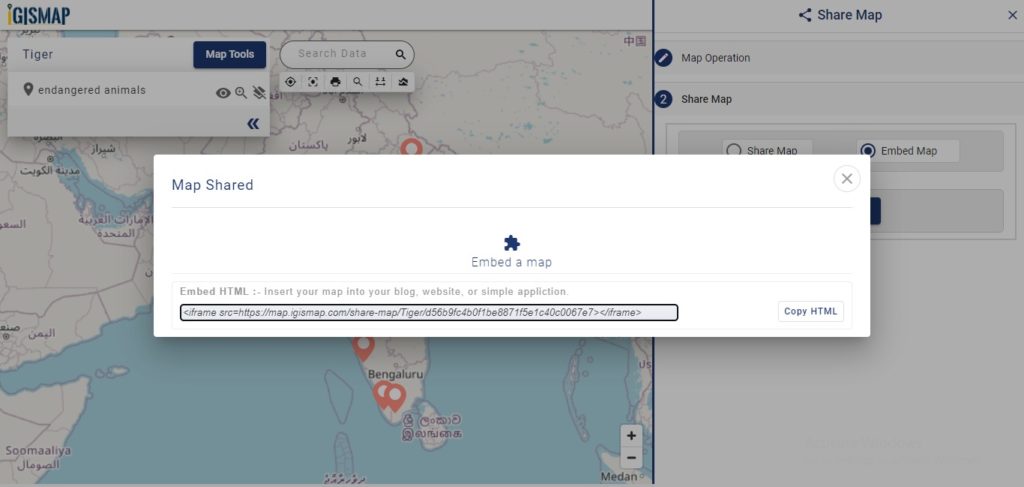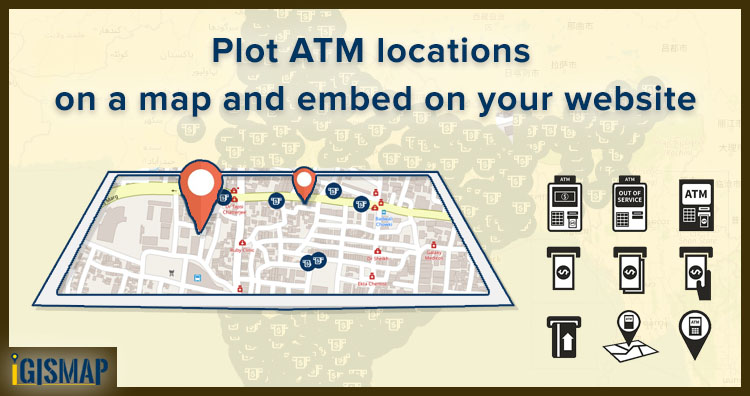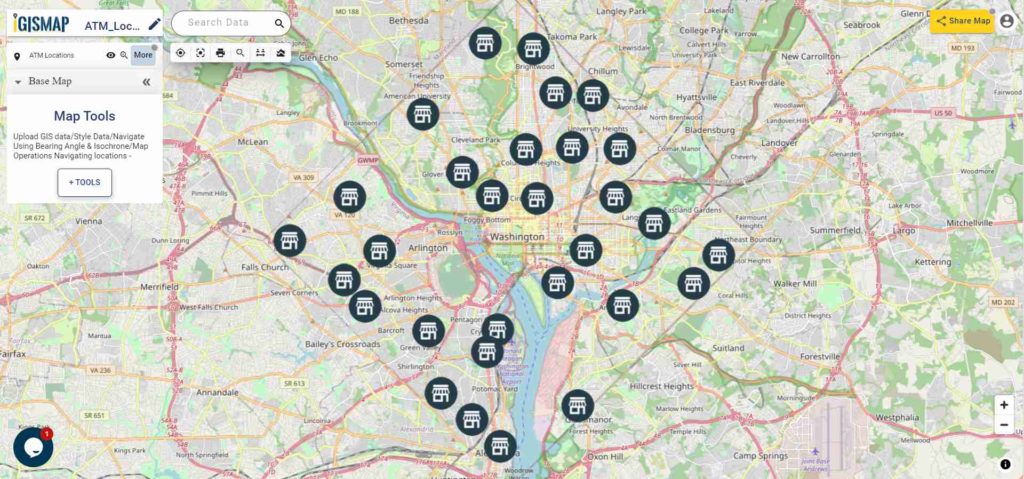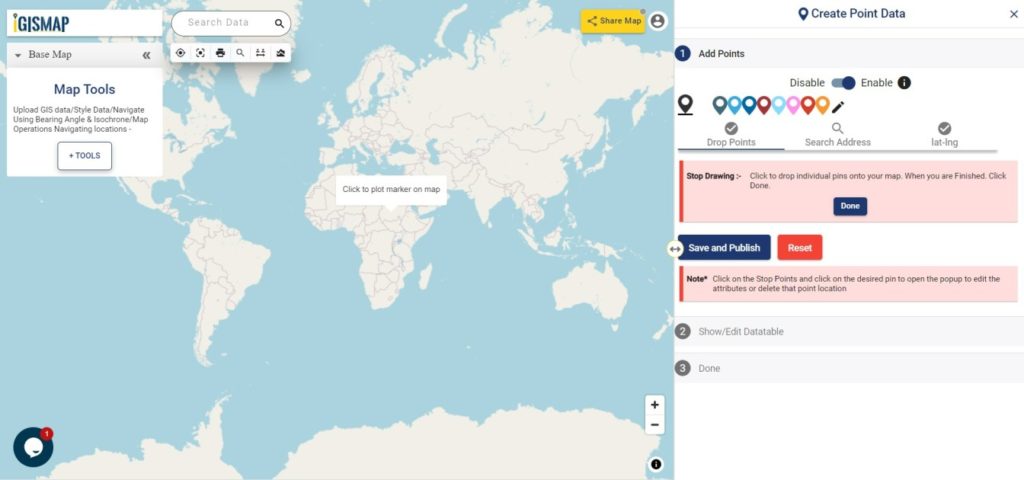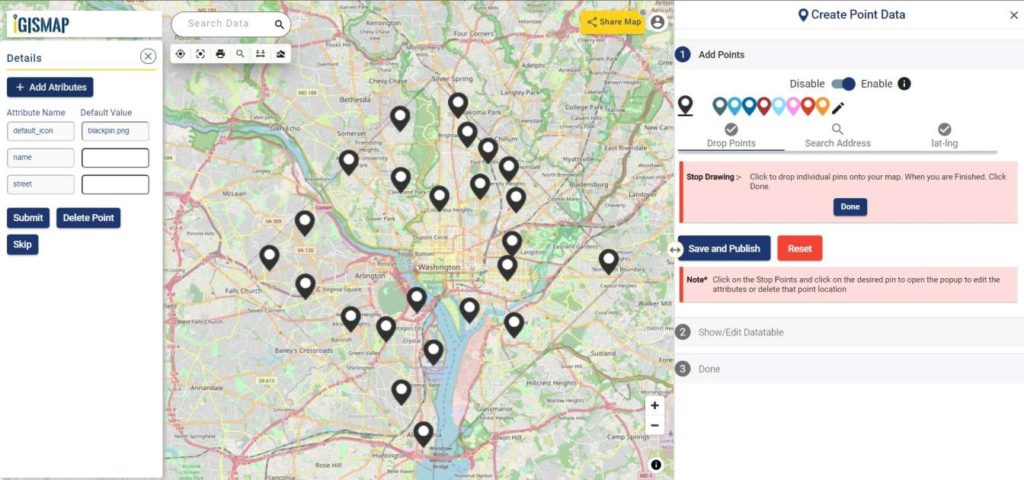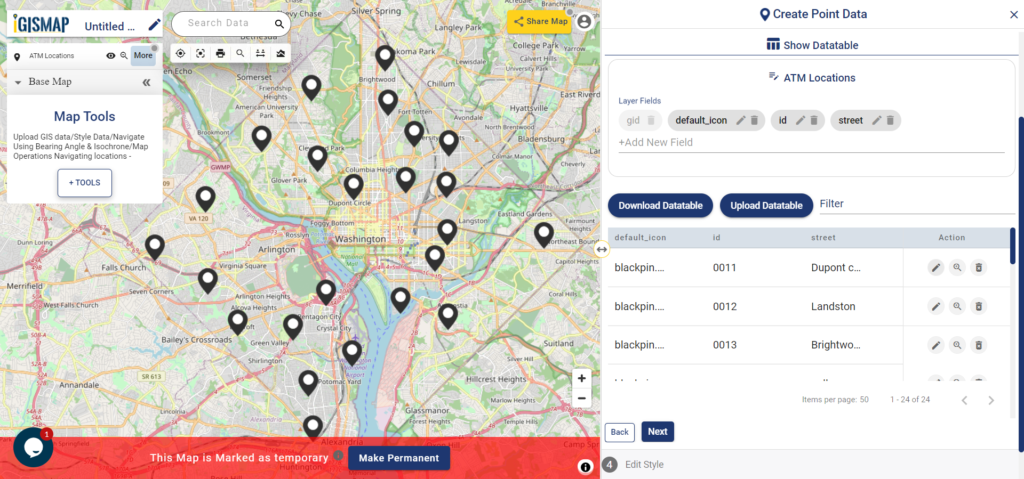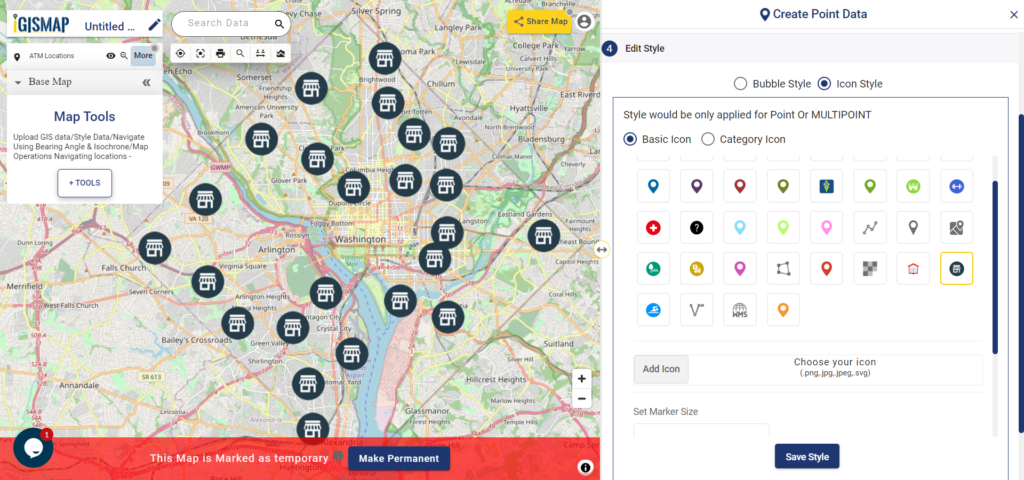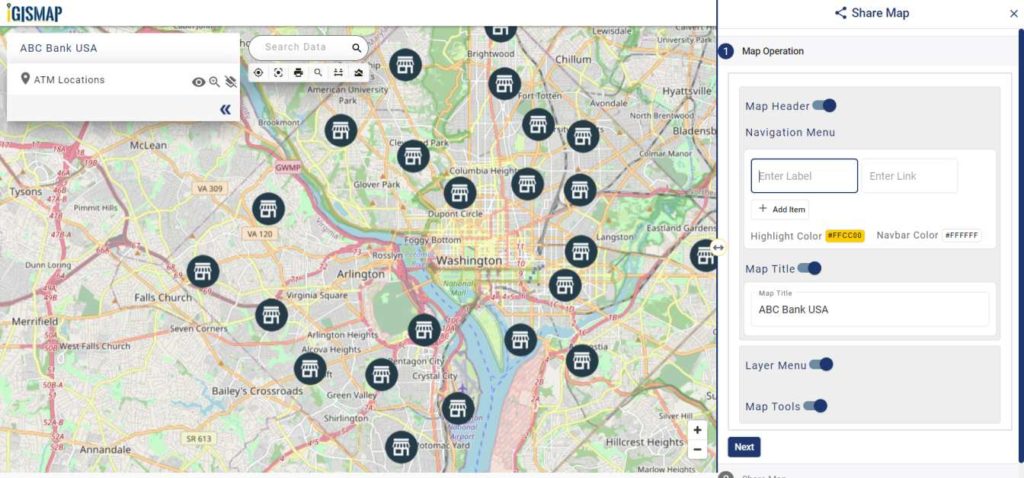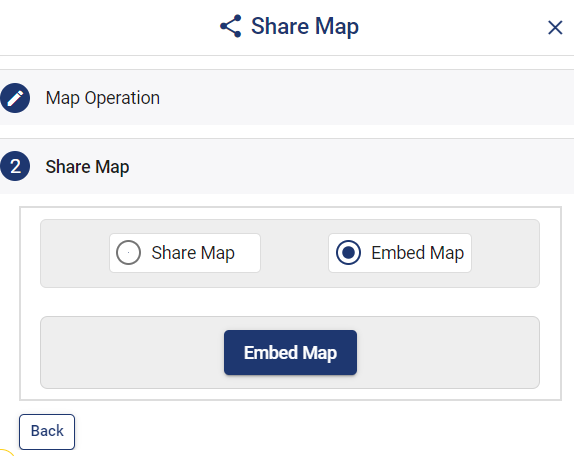Searching for vibrant cultural event data? Now you can easily Download Music Festivals Data using GIS Data by MAPOG. This intuitive platform offers a wide range of GIS formats—including Shapefile, KML, GeoJSON, MID, and many others—making it simple to integrate with various GIS tools. Whether for tourism planning, event management, cultural studies, or mapping global entertainment hubs, MAPOG provides structured, regularly updated music festival datasets, perfect for seamless analysis and mapping.
How to Download Music Festivals Data
GIS Data by MAPOG streamlines the entire process, offering quick access to music festivals data across thousands of locations and hundreds of curated layers. Supporting formats like KML, SHP, CSV, GeoJSON, SQL, DXF, MIF, TOPOJSON, and GPX, it’s an excellent choice for planners, researchers, and GIS enthusiasts alike.
Download Music Festivals Data of any countries
Note:
- All data is provided in GCS datum EPSG:4326 WGS84 CRS (Coordinate Reference System).
- Users need to log in to access and download their preferred data formats.
Step-by-Step Guide to Download Music Festivals Data
Step 1: Search for Music Festivals Data
Begin by navigating the GIS Data by MAPOG interface. Use the search layer option and type in “Music Festivals Data.” Check the dataset attributes to understand if the data is available in point, line, or polygon formats.
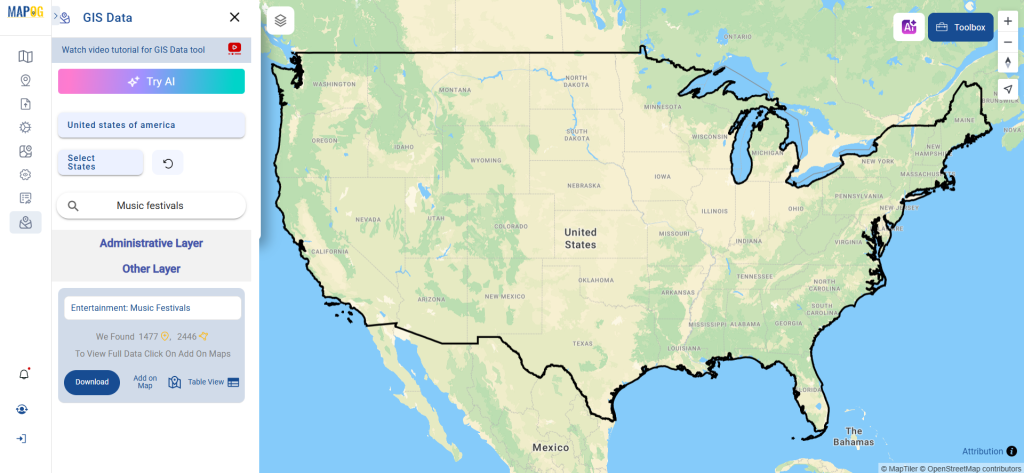
Step 2: Utilize the AI Search Tool
Leverage the smart “Try AI” feature to make your search faster and more accurate. Simply type a keyword like “Music festivals nearby,” and the AI engine will fetch the most relevant data layers within seconds, eliminating the need for manual browsing.
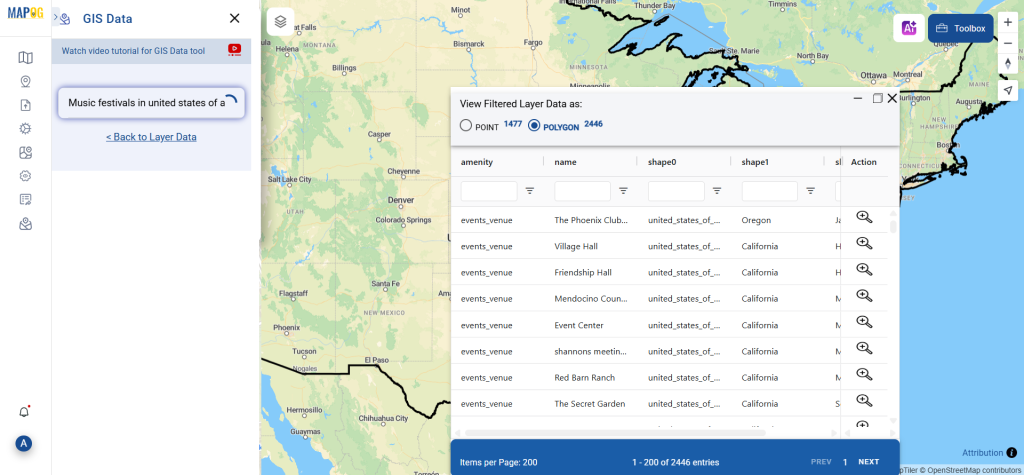
Step 3: Apply Data Filters
Refine your search effortlessly with the Filter Data option. Drill down into the data by selecting specific states and districts, allowing you to access highly targeted and location-specific music festival information for deeper insights.
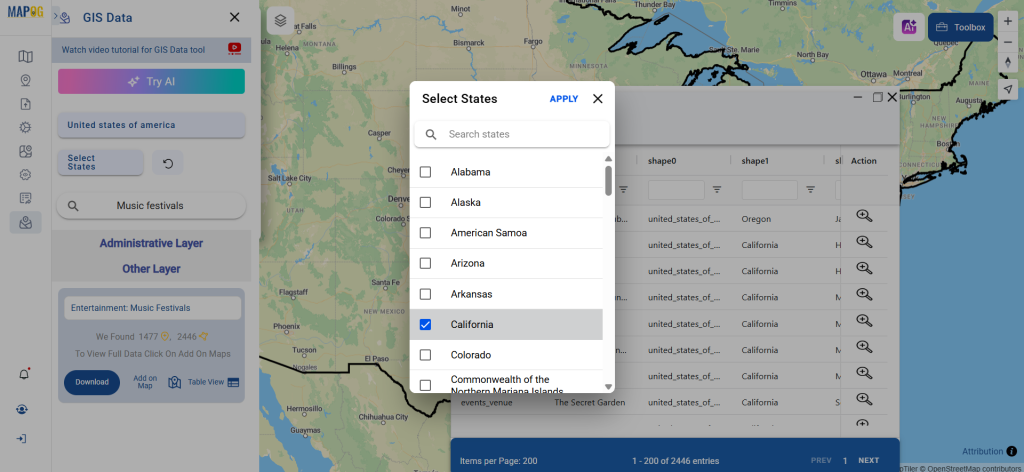
Step 4: Visualize with “Add on Map”
Click on the “Add on Map” feature to overlay your selected music festival data onto the interactive map interface. This visualization allows for better analysis of event distributions, accessibility patterns, and regional clustering—all crucial for informed planning and strategic mapping.
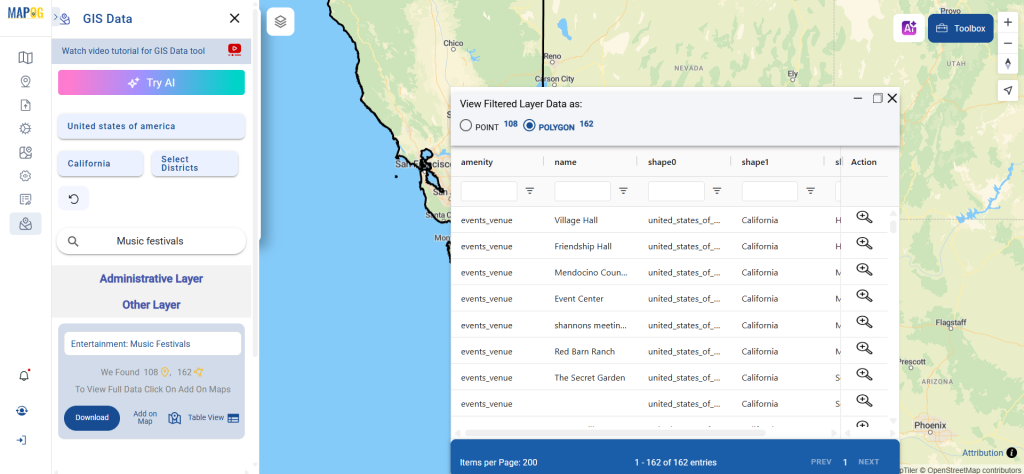
Step 5: Download Music Festivals Data
Finally, after confirming the dataset fits your needs, hit the “Download Data” button. You can choose between downloading a sample or the complete dataset. Select your desired format—whether it’s Shapefile, KML, GeoJSON, MID, or any other supported format—accept the terms, and proceed to download.
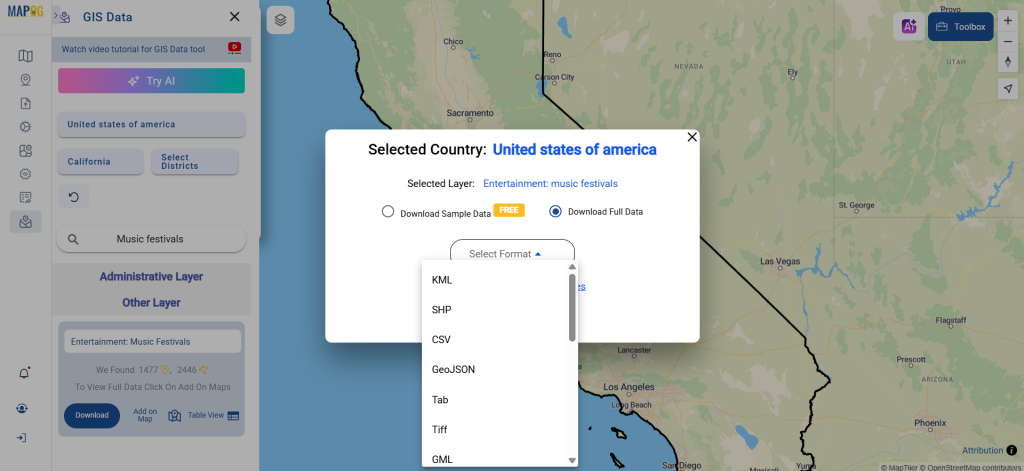
Final Thoughts
With GIS Data by MAPOG, the ability to download Music Festivals Data across diverse formats has never been simpler or more accessible. The platform ensures flexibility and depth for any GIS project, whether it’s for cultural research, travel planning, or event mapping. Tap into a world of music festivals and let your GIS analysis sing with rich, dynamic data!
With MAPOG’s versatile toolkit, you can effortlessly upload vector and upload Excel or CSV data, incorporate existing layers, perform polyline splitting, use the converter for various formats, calculate isochrones, and utilize the Export Tool.
For any questions or further assistance, feel free to reach out to us at support@mapog.com. We’re here to help you make the most of your GIS data.
Download Shapefile for the following:
- World Countries Shapefile
- Australia
- Argentina
- Austria
- Belgium
- Brazil
- Canada
- Denmark
- Fiji
- Finland
- Germany
- Greece
- India
- Indonesia
- Ireland
- Italy
- Japan
- Kenya
- Lebanon
- Madagascar
- Malaysia
- Mexico
- Mongolia
- Netherlands
- New Zealand
- Nigeria
- Papua New Guinea
- Philippines
- Poland
- Russia
- Singapore
- South Africa
- South Korea
- Spain
- Switzerland
- Tunisia
- United Kingdom Shapefile
- United States of America
- Vietnam
- Croatia
- Chile
- Norway
- Maldives
- Bhutan
- Colombia
- Libya
- Comoros
- Hungary
- Laos
- Estonia
- Iraq
- Portugal
- Azerbaijan
- Macedonia
- Romania
- Peru
- Marshall Islands
- Slovenia
- Nauru
- Guatemala
- El Salvador
- Afghanistan
- Cyprus
- Syria
- Slovakia
- Luxembourg
- Jordan
- Armenia
- Haiti And Dominican Republic
- Malta
- Djibouti
- East Timor
- Micronesia
- Morocco
- Liberia
- Kosovo
- Isle Of Man
- Paraguay
- Tokelau
- Palau
- Ile De Clipperton
- Mauritius
- Equatorial Guinea
- Tonga
- Myanmar
- Thailand
- New Caledonia
- Niger
- Nicaragua
- Pakistan
- Nepal
- Seychelles
- Democratic Republic of the Congo
- China
- Kenya
- Kyrgyzstan
- Bosnia Herzegovina
- Burkina Faso
- Canary Island
- Togo
- Israel And Palestine
- Algeria
- Suriname
- Angola
- Cape Verde
- Liechtenstein
- Taiwan
- Turkmenistan
- Tuvalu
- Ivory Coast
- Moldova
- Somalia
- Belize
- Swaziland
- Solomon Islands
- North Korea
- Sao Tome And Principe
- Guyana
- Serbia
- Senegal And Gambia
- Faroe Islands
- Guernsey Jersey
- Monaco
- Tajikistan
- Pitcairn
Disclaimer : The GIS data provided for download in this article was initially sourced from OpenStreetMap (OSM) and further modified to enhance its usability. Please note that the original data is licensed under the Open Database License (ODbL) by the OpenStreetMap contributors. While modifications have been made to improve the data, any use, redistribution, or modification of this data must comply with the ODbL license terms. For more information on the ODbL, please visit OpenStreetMap’s License Page.
Here are some blogs you might be interested in:
- Download Airport data in Shapefile, KML , MIf +15 GIS format – Filter and download
- Download Bank Data in Shapefile, KML, GeoJSON, and More – Filter and Download
- Download Railway data in Shapefile, KML, GeojSON +15 GIS format
- Download Farmland Data in Shapefile, KML, GeoJSON, and More – Filter and Download
- Download Pharmacy Data in Shapefile, KML, GeoJSON, and More – Filter and Download
- Download ATM Data in Shapefile, KML, MID +15 GIS Formats Using GIS Data by MAPOG
- Download Road Data in Shapefile, KML, GeoJSON, and 15+ GIS Form
